"Cherishing Little Steps - A Haven for Baby and Family Journeys"
Car Seat Safety for Toddlers
Are you ready to hit the road with your little one? Before you do, let’s talk about car seat safety for toddlers.
Did you know that using the right car seat can greatly reduce the risk of injury in case of an accident? It’s true! So, let’s make sure you have all the information you need to keep your toddler safe and secure while on the go.
From choosing the right car seat to understanding age and size requirements, we’ll cover everything you need to know. Plus, we’ll give you some valuable tips for securing your toddler in the car seat and maintaining it properly.
So, buckle up and get ready to learn all about car seat safety for your precious little passenger.
Key Takeaways
- Using the right car seat greatly reduces the risk of injury in an accident
- Rear-facing car seats offer enhanced protection for your toddler
- Age requirements determine the appropriate car seat for your child
- Proper installation of forward-facing car seats is crucial for safety
Importance of Car Seat Safety
You need to understand the importance of car seat safety for your toddler. As a parent, it’s your responsibility to ensure that your child is protected while traveling in a vehicle. Car seat safety regulations have been put in place to minimize the risk of injury or death in the event of an accident. These regulations specify the correct way to install and use car seats, as well as the appropriate age, weight, and height requirements for each type of seat.
Common car seat installation mistakes can compromise the safety of your child. One of the most frequent errors is improper installation. It’s crucial to carefully read the car seat manual and follow the instructions precisely. Another mistake is using a car seat that isn’t suitable for your child’s age, weight, or height. Always ensure that you choose an appropriate seat that meets the recommended guidelines.
Proper car seat safety isn’t only a legal requirement, but it also helps protect your child in the event of a collision. By understanding and adhering to car seat safety regulations, you can provide your toddler with the utmost protection while on the road. Remember, your child’s safety should always be your top priority.
Choosing the Right Car Seat
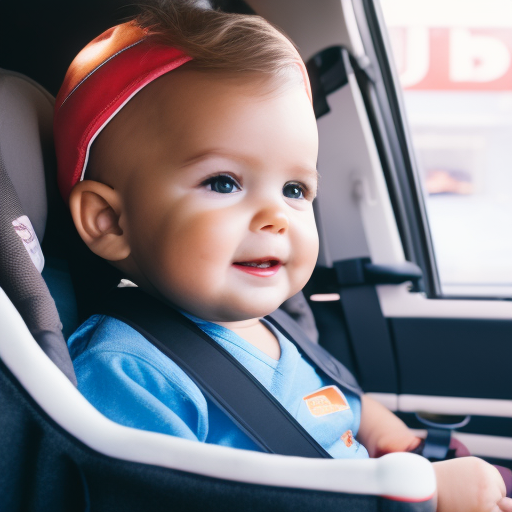
To ensure the safety of your toddler while traveling in a vehicle, it is essential to select the appropriate car seat that meets the recommended guidelines. With so many car seat brands and regulations to consider, it can be overwhelming to make the right choice. However, by understanding the different types of car seats and their features, you can make an informed decision that will provide optimal protection for your little one.
Here is a table comparing the features of four popular car seat brands:
| Brand | Type | Weight Limit | Installation |
|---|---|---|---|
| Graco | Convertible | 5-40 lbs | LATCH or seat belt |
| Britax | Infant | 4-35 lbs | LATCH or seat belt |
| Chicco | All-in-One | 5-120 lbs | LATCH or seat belt |
| Maxi-Cosi | 3-in-1 | 5-100 lbs | LATCH or seat belt |
Remember to always check the car seat regulations in your country or state to ensure compliance and safety. These regulations often include guidelines for proper installation, weight and height limits, and expiration dates. Additionally, consider factors such as ease of use, comfort, and durability when selecting a car seat.
Understanding Age and Size Requirements
When considering car seat safety for toddlers, it’s important to understand the age and size requirements that determine the appropriate seat for your child. These requirements ensure that the seat provides optimal protection and support for your little one during car rides.
Age requirements are typically based on the developmental stage of your child, as different seats cater to different age groups. For example, infants are usually recommended to be placed in rear-facing seats until they reach a certain age, while older toddlers can transition to forward-facing seats.
Size restrictions, on the other hand, take into account your child’s height and weight. This is crucial because car seats are designed to accommodate specific weight ranges and heights, ensuring that the seatbelt fits securely and that the child is properly restrained.
It’s essential to follow both the age requirements and size restrictions provided by the car seat manufacturer, as they’ve been thoroughly tested to guarantee the safety of your child. Remember, every child is different, so it’s crucial to select a car seat that suits their specific age and size requirements. By doing so, you can have peace of mind knowing that your little one is secure and protected while on the road.
Rear-Facing Car Seats
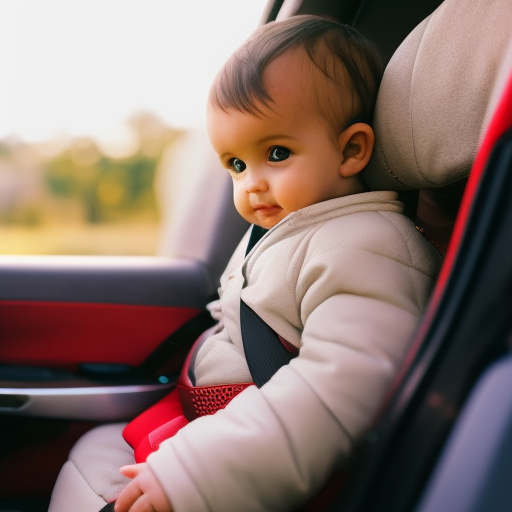
Proper installation and utilization of rear-facing car seats is essential for the safety of your toddler. Rear-facing car seats offer several benefits that can protect your child in the event of a car accident. Here are four reasons why rear-facing car seats are the best choice for your toddler:
-
Enhanced Protection: Rear-facing car seats provide maximum protection for your toddler’s head, neck, and spine. In a collision, the seat absorbs most of the impact, reducing the risk of serious injuries.
-
Proper Development: The rear-facing position allows your toddler’s body to distribute the force of a crash evenly, minimizing the strain on their underdeveloped neck and spine. This promotes healthy growth and development.
-
Extended Usage: Rear-facing car seats can accommodate your toddler’s growth for a longer period compared to forward-facing seats. They’re designed to accommodate higher weight and height limits, ensuring your child’s safety as they grow.
-
Transitioning to a Forward-Facing Car Seat: Experts recommend keeping your child in a rear-facing car seat until they reach the weight and height limits specified by the manufacturer. It’s important to make the transition gradually and only when your child meets the requirements.
Forward-Facing Car Seats
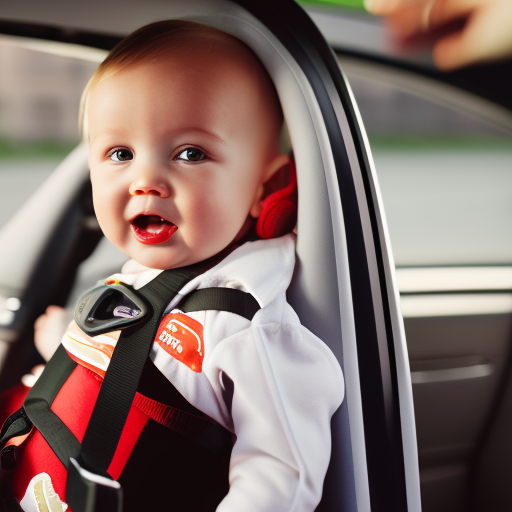
Now, let’s shift our focus to the benefits of using forward-facing car seats for your toddler.
Installing a forward-facing car seat properly is crucial for your child’s safety. Make sure to read the car seat manual and your vehicle’s manual for specific instructions on installation. This will ensure that the car seat is securely fastened and properly positioned in your vehicle.
When it comes to harnessing your toddler in a forward-facing car seat, it’s important to adjust the harness straps correctly. The harness straps should be positioned at or above your child’s shoulders, and they should be snug, but not too tight. You should be able to fit only two fingers between the straps and your child’s collarbone.
Using a forward-facing car seat has several benefits. It allows your toddler to have a better view of the surroundings, which can help keep them happy and entertained during car rides. Additionally, forward-facing car seats are typically more comfortable for older toddlers, as they provide more legroom and freedom of movement.
Combination Car Seats

To ensure your toddler’s safety, consider using a combination car seat that offers both rear-facing and forward-facing options. Combination car seats are designed to grow with your child and provide maximum protection at every stage. Here are some key points to keep in mind when using a combination car seat:
-
Proper installation: It’s crucial to install the car seat correctly to ensure your child’s safety. Follow the manufacturer’s instructions carefully and use the seat belt or LATCH system to secure the seat tightly.
-
Transitioning to a booster seat: As your child grows, they’ll eventually outgrow the combination car seat. When they reach the weight and height limits specified by the manufacturer, it’s time to transition to a booster seat. Make sure to choose a booster seat that fits your child properly and provides adequate support.
-
Adjusting the harness: As your child grows taller, you’ll need to adjust the harness straps. The straps should be at or above your child’s shoulders when rear-facing and at or below the shoulders when forward-facing. Always check the harness tightness to ensure a secure fit.
-
Regular maintenance: Keep your combination car seat clean and free from debris. Regularly check for any signs of wear and tear, and replace the seat if necessary. Additionally, stay updated on any recalls or safety notices related to your specific car seat model.
Booster Seats
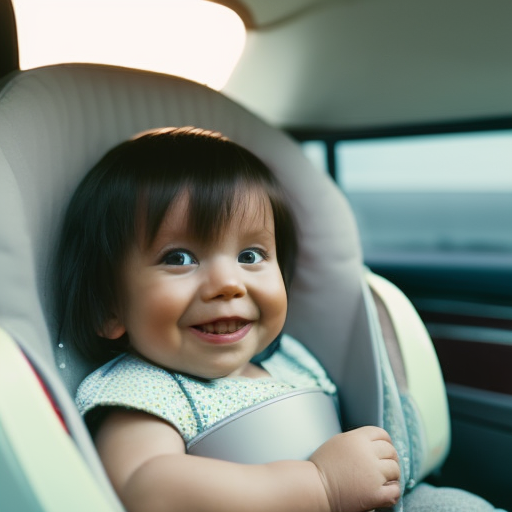
When your child has outgrown their combination car seat, it’s important to transition to a booster seat for their continued safety. Booster seats are designed to properly position the seat belt on your child’s body, reducing the risk of injury in the event of a crash. To ensure you are using the booster seat correctly, it is essential to follow car seat regulations and guidelines for proper booster usage.
Here are some key points to keep in mind when using a booster seat:
| Booster Seat Tips | |
|---|---|
| 1. Age and Weight | Check the manufacturer’s guidelines to determine the appropriate age and weight range for using a booster seat. |
| 2. Seat Belt Fit | Make sure the lap belt sits low on your child’s hips, touching their thighs, and the shoulder belt fits snugly across their chest and shoulder, without crossing their neck or face. |
| 3. Backless vs. High-back | Consider using a high-back booster seat if your vehicle’s seat does not have a headrest, as it provides additional head and neck support. |
Installing a Car Seat Properly

To ensure the safety of your child while traveling, properly installing a car seat is of utmost importance. Here are some car seat installation tips that will help you avoid common car seat mistakes:
-
Read the car seat manual: Every car seat is different, so it’s crucial to read the manual thoroughly. Familiarize yourself with the installation instructions and any specific requirements for your car model.
-
Position the car seat correctly: The car seat should be installed in the back seat of your vehicle, preferably in the middle. This location offers the most protection in the event of a side-impact collision.
-
Use the appropriate installation method: Depending on your car seat and vehicle, you may need to use either the seat belt or the LATCH system (Lower Anchors and Tethers for Children). Follow the instructions provided to ensure a secure installation.
-
Achieve the right fit: The car seat should be snugly secured with minimal movement. Check the tightness of the harness straps by pinching them near the child’s shoulders. If you can pinch any excess webbing, the straps need to be tightened.
Securing Your Toddler in the Car Seat
Secure your toddler in the car seat using the harness straps provided. Properly securing your child is crucial to ensure their safety during car rides. Here are some securing techniques to follow and common mistakes to avoid:
| Securing Techniques | Common Mistakes |
|---|---|
| Make sure the harness straps are snug but not too tight. | Avoid leaving slack in the straps, as it can lead to improper restraint in the event of an accident. |
| Position the chest clip at armpit level. | Placing the chest clip too low can cause the straps to slide off the shoulders, compromising your child’s safety. |
| Ensure the harness straps are threaded through the correct slots. | Incorrect threading can result in ineffective restraint and increase the risk of injury. |
Regular Maintenance and Inspection
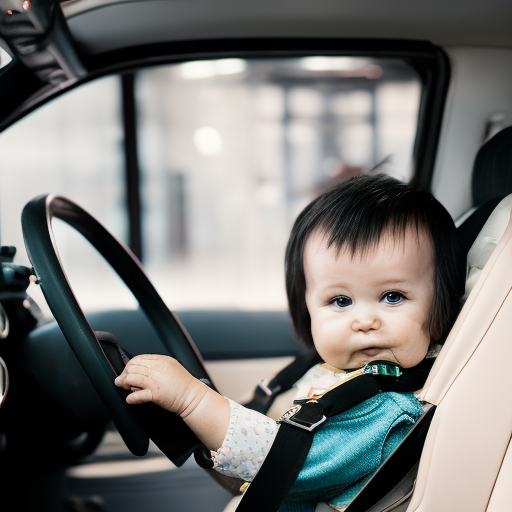
Regular maintenance and inspection of your toddler’s car seat is essential to ensure its safety and effectiveness. Here are four important guidelines to follow:
-
Check for wear and tear: Regularly inspect the car seat for any signs of wear and tear, such as frayed straps, loose stitching, or broken buckles. These issues can compromise the seat’s ability to protect your child in an accident.
-
Clean the car seat: Clean the car seat regularly to remove dirt, crumbs, and spills. Follow the manufacturer’s instructions for cleaning, as using harsh chemicals or improper cleaning methods can damage the seat.
-
Adjust the straps: As your child grows, regularly adjust the straps to ensure they fit snugly and securely. The straps should be positioned at or slightly below your child’s shoulders for optimal protection.
-
Check for recalls or expiration: Stay informed about any recalls or expiration dates associated with your toddler’s car seat. Manufacturers occasionally issue recalls to address safety concerns, and car seats typically have an expiration date due to the wear and tear they endure over time.
Traveling With a Car Seat

When traveling with your toddler’s car seat, it’s important to properly secure it in the vehicle. This ensures the safety of your child during the journey. To make traveling with a car seat easier, there are various car seat accessories available in the market.
These accessories can help you transport the car seat conveniently and keep it clean and protected. Some popular accessories include car seat travel bags, which provide a convenient way to carry and store the car seat when you’re on the go. Additionally, there are car seat covers available that can protect the car seat from spills and stains, making cleaning a breeze.
If you don’t want to bring your own car seat, another option is to rent one. Many car rental companies offer car seat rental services, allowing you to have a safe and convenient option for your child’s transportation needs. Before renting a car seat, ensure that it meets the safety standards and is appropriate for your child’s age and weight. It’s also essential to inspect the car seat thoroughly for any damages or defects before using it.
Car Seat Safety Tips for Long Trips

To ensure maximum comfort and protection during long trips, prioritize the stability of your toddler’s car seat. Here are some essential car seat safety tips to consider for those lengthy journeys:
-
Buckle up correctly: Ensure that your toddler is securely strapped into the car seat with the harness properly fastened. The straps should be snug, with no slack, and the chest clip should be at armpit level.
-
Regular breaks: Frequent breaks during long trips are crucial for your toddler’s safety and comfort. Get out of the car, stretch your legs, and let your little one move around. This will help prevent any discomfort and reduce the risk of pressure sores.
-
Car seat safety for older toddlers: As your child grows, you may need to adjust the car seat settings accordingly. Make sure the shoulder straps are at or above their shoulders, and the harness is snug. If your toddler has outgrown their car seat, consider transitioning them to a booster seat with a backrest for added support.
-
Car seat safety during emergencies: In the unfortunate event of an emergency, it’s important to know how to quickly and safely remove your child from their car seat. Familiarize yourself with the car seat’s release mechanism and practice removing your toddler in a calm and controlled manner.
Frequently Asked Questions
Can a Toddler Wear a Winter Coat While in a Car Seat?
You might be wondering if it’s safe for your toddler to wear a winter coat in their car seat. Well, the truth is, it’s not recommended. But don’t worry, there are alternative measures you can take to ensure their safety.
Is It Safe to Use a Second-Hand Car Seat for My Toddler?
Using a second-hand car seat for your toddler can be risky. Ensure the car seat hasn’t expired and is properly installed. Don’t compromise on safety. Your child’s well-being is worth investing in.
How Long Can My Toddler Stay in a Rear-Facing Car Seat?
You should keep your toddler in a rear-facing car seat for as long as possible. It offers numerous benefits, such as protecting their head, neck, and spine. Only transition to a forward-facing seat when they reach the weight and height limits specified by the car seat manufacturer.
Can I Use a Car Seat on an Airplane for My Toddler?
Yes, you can use a car seat on an airplane for your toddler. However, there are alternatives like CARES harness or a FAA-approved child restraint system specifically designed for airplane travel.
Are There Any Specific Guidelines for Securing a Toddler With Special Needs in a Car Seat?
You might think securing a toddler with special needs in a car seat is a piece of cake. But let me tell you, it’s a whole different ballgame. Safety is key, so here are some guidelines to keep in mind.
Conclusion
So remember, when it comes to car seat safety for your toddler, it’s important to:
- Choose the right seat
- Follow age and size requirements
- Secure them properly
Regular maintenance and inspection are crucial. Don’t forget to bring your car seat when traveling. By following these tips, you can ensure your child’s safety on the road.
So buckle up, because safety always comes first!



child porn
allergy medications for itching skin alternatives to allergy medication allergy medications for itching skin
prednisone 5mg cheap order prednisone 10mg sale
medication to decrease stomach acid buy generic glucophage 1000mg
progesterone only pill for acne buy deltasone 5mg without prescription acne treatment for teenagers
generic allergy medication list medrol price allergy over the counter drugs
best heartburn medicine buy generic baycip
isotretinoin online order accutane 10mg generic accutane 20mg ca
virtual visit online physician belsomra order generic provigil 100mg
buy amoxicillin generic amoxicillin buy online order amoxil sale
zithromax over the counter buy zithromax 250mg pill brand azithromycin 250mg
purchase gabapentin buy gabapentin 600mg generic
how to get azipro without a prescription buy azithromycin 250mg for sale buy azithromycin pills
order furosemide buy cheap generic furosemide
omnacortil oral order prednisolone pills omnacortil tablets
buy deltasone 10mg online cheap order deltasone 40mg pill
amoxicillin without prescription oral amoxicillin 500mg amoxil 250mg pill
buy vibra-tabs pill order doxycycline 100mg generic
best allergy for itchy skin order ventolin 2mg buy ventolin 4mg generic
oral amoxiclav buy augmentin 625mg for sale
synthroid 150mcg usa buy generic synthroid synthroid 150mcg tablet
levitra sale levitra 20mg cost
clomid pill buy clomid without a prescription buy clomiphene 50mg for sale
buy zanaflex medication buy tizanidine 2mg online buy tizanidine medication
buy semaglutide medication buy generic semaglutide 14 mg rybelsus 14mg sale
purchase deltasone pills order prednisone 40mg without prescription prednisone 5mg sale
cost rybelsus 14 mg rybelsus 14 mg us generic semaglutide
buy accutane pill order isotretinoin buy cheap generic accutane
ventolin 2mg drug order albuterol 2mg pills albuterol order online
amoxil 250mg drug order amoxil 1000mg online buy generic amoxicillin over the counter
clavulanate where to buy order augmentin 625mg for sale augmentin 375mg canada
buy zithromax paypal zithromax generic azithromycin 250mg pills
synthroid where to buy synthroid canada purchase levothyroxine
buy prednisolone 10mg without prescription order prednisolone 40mg generic omnacortil 5mg pills
order clomid 50mg generic order clomid 100mg generic order clomiphene 50mg
cheap neurontin without prescription order neurontin 800mg sale neurontin 600mg pills
order viagra 100mg sale order viagra 50mg generic viagra fast shipping
buy lasix 40mg online cheap buy furosemide 100mg generic buy furosemide generic
semaglutide pills order generic rybelsus 14mg semaglutide 14 mg generic
doxycycline 200mg tablet acticlate price acticlate usa
buy levitra generic buy vardenafil 10mg online cheap order vardenafil 20mg
poker online for real money best online casino games roulette online real money
order pregabalin 75mg generic lyrica online order pregabalin sale
purchase plaquenil pill order plaquenil 400mg pills purchase plaquenil online
generic triamcinolone 4mg aristocort where to buy triamcinolone over the counter
tadalafil 5mg generic order tadalafil 20mg online cialis 5 mg
buy desloratadine 5mg how to buy desloratadine cost clarinex
purchase cenforce sale buy cenforce 50mg pills buy cenforce pills
claritin drug claritin 10mg for sale order loratadine 10mg online cheap
buy chloroquine generic aralen 250mg brand buy generic chloroquine for sale
buy generic orlistat buy diltiazem generic diltiazem usa
order lipitor sale order lipitor 20mg pill order atorvastatin generic
norvasc over the counter order norvasc 5mg for sale norvasc usa
acyclovir 800mg for sale order zovirax 400mg generic allopurinol over the counter
zestril 10mg cheap buy zestril 5mg without prescription buy zestril 5mg for sale
crestor price zetia 10mg uk ezetimibe pill
purchase motilium pill order motilium generic tetracycline drug
buy lopressor paypal lopressor generic lopressor uk
order flexeril sale cyclobenzaprine price order lioresal sale
buy atenolol sale order tenormin 100mg without prescription buy atenolol 50mg pill
toradol pill toradol for sale online generic colcrys
buy medrol 8 mg buy depo-medrol medication medrol 8mg otc